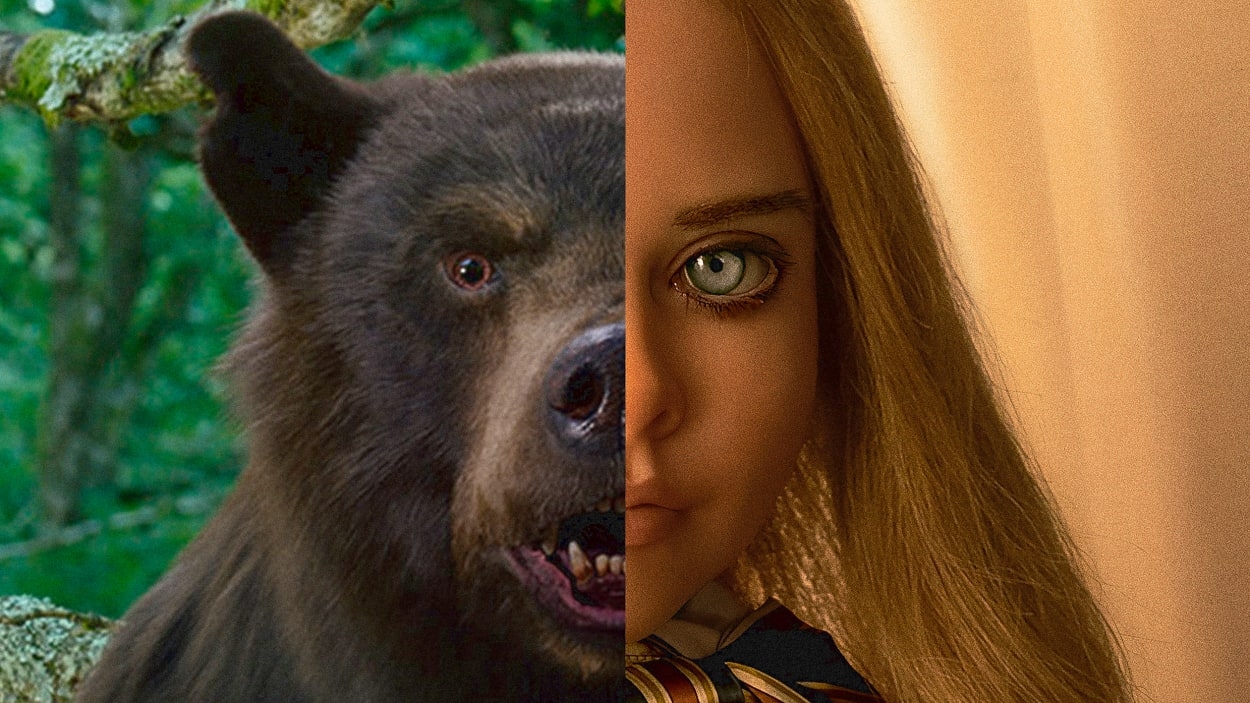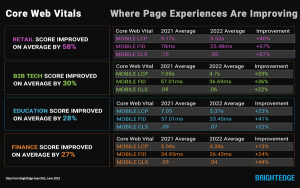By and Jeff Beer
Do you believe in love at first sight? For a marketer, the phenomenon occurs when what you’re tasked with selling has an immediately identifiable characteristic that you just know will spark people’s interest and attention.
For Universal Pictures’s chief marketing officer Michael Moses, it happened at the unique combination of two words making up one movie title: Cocaine. Bear.
As soon as the project was announced, before any filming had even begun, the online hype and anticipation was unique. “There was no visual, there was no poster, this was the very early days when we just said we were going to make this movie, and it just trended from that, and people just—as the internet does—just took charge and had a blast with it,” says Moses. “That really started to inform everything, and we set a strategy of keep it simple. This movie is called Cocaine Bear, and the promise in those two words might just be enough to entice people.”
Cocaine Bear, directed by Elizabeth Banks, premiered in theaters on February 24 and made $28.4 million in global box office that opening weekend. It finished second in the North American box office to Marvel’s Ant-Man sequel Quantumania, and wasn’t far behind in the second week. Considering that it cost about $35 million to make, this is Universal’s second horror hit of the year. The studio’s first blockbuster of 2023 was the killer doll flick M3GAN, which has made more than $170 million globally since it hit theaters in early January.
A few things tie these two films together, aside from their rather unique homicidal protagonists. In both cases, Universal was able to parlay internet buzz and meme-ability into actual movie ticket sales.
Movie marketing has changed significantly even in just the past two years. Not only are film marketers faced with the same challenges of all marketers—the continued fragmentation of media, the always-on content machine of social media, younger audiences being seemingly allergic to traditional advertising—but the trends accelerated by the pandemic have fundamentally altered the entire premise of their pitch. Before, the job was to convince moviegoers to pick their particular movie. Now their task is to convince you to actually go to the movies in the first place—and then pick their particular movie.
Universal Pictures has the added weight of not having any big fantasy or superhero intellectual property on its slate, but despite not having presold ideas with built-in fan bases, it has been able to find audiences for original films. It’s a task that has changed quickly and become increasingly tough, so I wanted to talk to Moses about what’s changed most about his job [Fast Company profiled his marketing prowess back in 2015], and what M3GAN and Cocaine Bear can tell us about the future of movie marketing.

The thing about internet buzz is that it can very easily be a mirage. Just because something gets a hashtag and a lot of followers and likes does not mean that it will automatically sell tickets. If there was a direct correlation between social media popularity and box office success, every Selena Gomez movie would bank Avatar-size sales.
So while there may be that special identifiable characteristic to catch a marketer’s eye right away, a film’s campaign can’t overrely on it. For M3GAN, that characteristic was the dance. (You know the one.) “It spoke in the language of TikTok,” says Moses. “It was so outrageous and weird and memorable, it was going do something. How far it would go, and how to supplement that was the question.”
The studio not only encouraged and amplified fans’ re-creations and re-edits of the dance on social, but it also deployed a troupe of IRL M3GANs to various live events and late-night appearances. A month into its release, M3GAN hashtagged TikTok videos had more than 1.8 billion views.
Moses says that the film was very consciously rated PG-13 in order to get as many of those online fans into theaters. “It was a PG-13 film that we knew was going to have a primary audience of younger females, and when you know with precision who your core audience is, you can use data tools and segmentation possible today to really focus on them,” says Moses. “For Cocaine Bear, it was an R movie for 18-plus, but who knows what the older age is or the gender balance. It was a bit tougher in that way.”
Right from the start, even though the online buzz was there, Moses and his team had to answer some pretty fundamental questions. “Early on, we had to make sure if we could even advertise a movie called Cocaine Bear” says Moses. “Will networks put a spot for a movie about a cocaine bear, titled Cocaine Bear, on the air? Once we got through that, it was just about honoring the gonzo spirit of the film itself, and letting that bear do cocaine.”
The key to the film’s marketing was to mix created content and just engaging with culture. One of the film’s stars, comedian Scott Seiss, used his social media to regularly post funny bits about the film. Leading up to the Super Bowl, there was an Instagram post of the bear snorting the chalk lines of the football field; the studio made a 8-bit, Pac-Man-style online game called The Rise of Pablo Escobear; and the film’s Twitter handle regularly chimed in on the trending news stories of the day.
More than anything, Moses credits his team’s restraint with much of its marketing success behind the film. “We put our first trailer out in late November, and the view counts and other metrics we pay attention to were astronomically high for an original film,” says Moses. “Then we went quiet for a while, because we saw just how potent this idea and title were.” About three weeks prior to release, they fired everything back up with promotions around the Super Bowl, including a pregame ad for the film, to kick things into high gear in the last weeks before it dropped.
“The discipline was to stay true to the simplicity of the (film’s) promise,” says Moses. “We as marketers tend to get really sweaty and nervous, and you start throwing everything out there. But young people are difficult to reach with traditional advertising, they know how to skip ads, so you do have to be in all of these other places. You plan for pick-up, virality, and adoption, but anyone who says they can predict that is either not in touch or high on their own supply.”
When it comes to using the studio’s recent successes to predict the future, Moses is understandably hesitant. In fact, part of the studio’s marketing success has been in treating each film as a distinct product and adapting the approach to its audience accordingly. What has helped Universal’s marketing significantly is that Moses and his team are invited into the development process at the greenlighting stage to ask essentially two questions: First, how marketable is this idea? And second, does it have an audience?
“That second equation is sometimes what gets lost,” says Moses. “If you can’t identify that there is an audience that is at least possible for this, then you shouldn’t be making it. That’s the entry point. Beyond that, if you’re going to do originals, then it should be what we call “bold flavor” movies. A lot of horror falls into that category. There’s a strong personality and an easily communicated idea, and it’s a good time. Right now, looking at originals, that’s the filter through which we’re looking at all potential projects.”
One major adjustment over the past few years has been the shortening of the timeline in movie campaigns. Not long ago, your typical release would have a six-month marketing campaign. Now, it’s about half that. Streaming has conditioned the audience to expect to watch something when we want, which is typically as soon as possible. “The whole world is on demand, so when people see something advertised, they expect it to arrive pretty quickly,” says Moses. “We just launched our Fast X campaign on the Super Bowl, and it comes out in mid-May, so that’s three months start to finish. Little Mermaid will likely have its first trailer during the Oscars, and it comes out in May. You just see this more and more. There’s too much choice, it’s hard to get people’s attention, and it’s really hard to keep people’s attention.”
(7)








